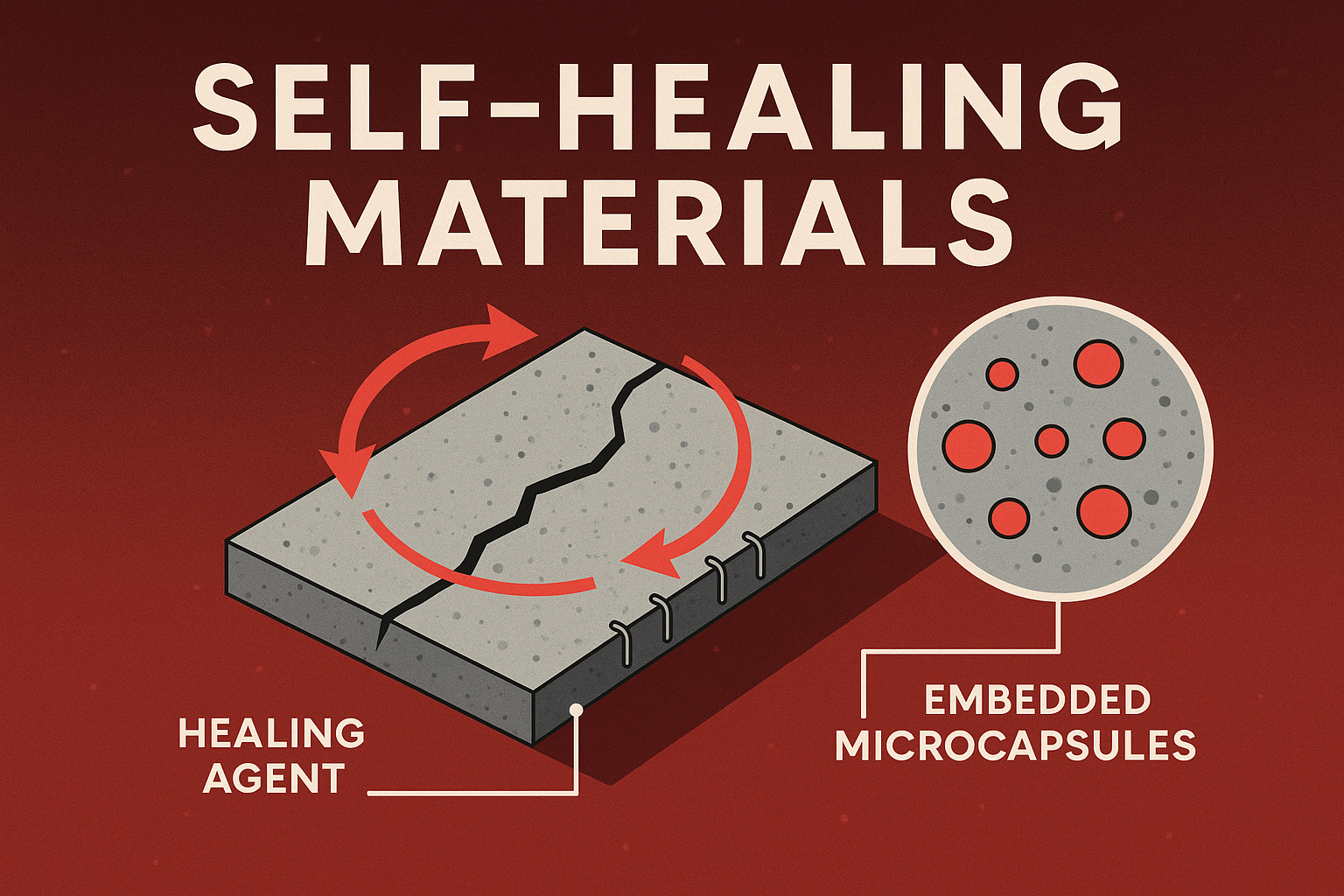Self-Healing Materials – The Future of Durable Design
Imagine a world where your phone screen repairs itself after a scratch, or infrastructure like bridges and pipelines can automatically fix small cracks before they become catastrophic. Welcome to the fascinating world of Self-Healing Materials.
These innovative materials are inspired by biological systems—just as our skin heals after a cut, these materials can restore themselves when damaged. They incorporate embedded microcapsules or vascular networks filled with healing agents. When a material is damaged, the capsules break and release these agents, which react and “heal” the crack or tear.
Key Applications:
Consumer Electronics: Self-repairing phone screens and flexible devices.
Aerospace and Automotive: Materials that detect and repair microfractures in real time.
Construction: Concrete that seals its own cracks, reducing long-term maintenance.
Medical Devices: Implants that last longer by regenerating minor damages.
Why It Matters:
Extends product life
Reduces maintenance costs
Increases safety in critical infrastructure
Moves us closer to sustainable manufacturing
As this field matures, we can expect to see broader adoption across industries, making our world more resilient and efficient.
🔖 Tags: #SelfHealingMaterials #SmartMaterials #Innovation #MaterialScience #FutureTech #Sustainability #Engineering #AvieraLabs #TechTrends #AIEnabledDesign
